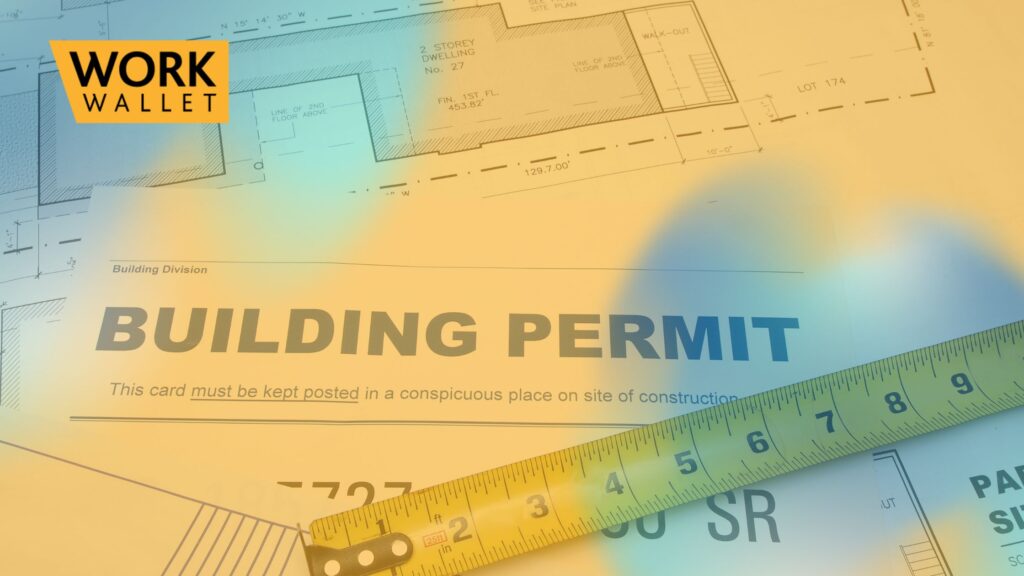Permit to Work Systems: Essential for Workplace Safety
03 February 2025

A Permit to Work (PTW) system is a formal safety control mechanism that authorises high-risk work in hazardous environments. It ensures that only trained and competent personnel carry out these tasks while adhering to strict safety protocols.
PTW systems are commonly used in construction, manufacturing, energy, and chemical industries, where dangerous tasks such as working at height, electrical work, hot work, and confined space entry occur.
Why is a Permit to Work System Important?
Implementing a Permit to Work system is crucial for:
- Preventing workplace accidents – Identifying hazards and implementing control measures before work begins.
- Ensuring regulatory compliance – PTW documentation provides evidence that all legal and safety requirements are met.
- Improving communication – Workers, supervisors, and contractors understand job-specific risks and precautions.
- Enhancing operational efficiency – Streamlining high-risk work procedures minimises delays and confusion.
Common Types of Work Permits
Different types of PTWs exist, depending on the nature of the work.
1. Hot Work Permit
Authorises tasks that generate heat, sparks, or flames, such as welding, cutting, or grinding. It includes fire prevention measures like fire-resistant blankets, extinguishers, and designated work areas.
2. Cold Work Permit
Covers non-heat-producing hazardous activities, including chemical handling, heavy lifting, and scaffolding.
3. Confined Space Permit
Required for work in restricted spaces such as tanks, tunnels, and ducts, where the risk of asphyxiation, toxic exposure, or entrapment is high.
4. Electrical Work Permit
Issued for activities involving electrical systems, ensuring that de-energisation and Lockout/Tagout (LOTO) procedures are followed.
5. Working at Height Permit
Ensures safe working practices when operating at elevations above ground level, reducing fall risks through safety harnesses, guardrails, and scaffolding checks.
6. Lockout Tagout (LOTO) Permit
Used for equipment maintenance and servicing, ensuring machinery is wholly isolated from energy sources before work begins.
Key Components of an Effective PTW System
For a Permit to Work system to be effective, it must include:
- Hazard Identification – Defining risks associated with the task.
- Risk Assessment – Determining potential dangers and implementing controls.
- Scope of Work – Clearly outlining the task, location, and duration.
- Roles & Responsibilities – Specifying who is responsible for issuing, authorising, and executing the work.
- Approval & Authorisation – Ensuring proper sign-offs before work starts.
- Emergency Procedures – Outlining response plans for potential incidents.
- Monitoring & Compliance – Supervisors regularly check compliance during operations.
- Permit Closure – Confirm that work has been safely completed and the area restored.
Overcoming Common Challenges in PTW Implementation
Despite its benefits, PTW systems can face challenges such as:
- Resistance to change – Some workers may resist additional procedures, but regular training can reinforce the importance of safety.
- Poor communication – Miscommunication can cause delays or errors, so clear documentation and digital permit systems are recommended.
- Training gaps – Employees must be fully trained on PTW protocols to avoid costly mistakes and ensure compliance.
- Paper-based inefficiencies – Manual PTW processes are prone to errors and delays. Digital permit-to-work solutions streamline the process and improve tracking.
Streamline Permit to Work with Work Wallet
At Work Wallet, we provide comprehensive digital health & safety solutions that help businesses manage PTW systems efficiently. Our health and safety software platform ensures:
✔ Easy permit creation and tracking
✔ Real-time monitoring and compliance checks
✔ Automated notifications for approvals and renewals
✔ Integration with mandatory occurrence reporting
By digitising your Permit to Work process, you can enhance workplace safety, reduce risks, and fully comply with regulations.
Get Started Today
Take control of your Permit to Work system with Work Wallet’s digital safety solutions. Contact us today for a demo or consultation!
Share post
More Posts
Risk Assessments in Health and Safety: A Comprehensive Guide
Feb 2025
At Work Wallet, workplace safety is a priority for businesses of all sizes. Risk assessments in health and safety are...
Understanding Mandatory Occurrence Reporting
Jan 2025
As a dedicated health and safety provider based in Derby, we are committed to helping businesses navigate the latest safety...



